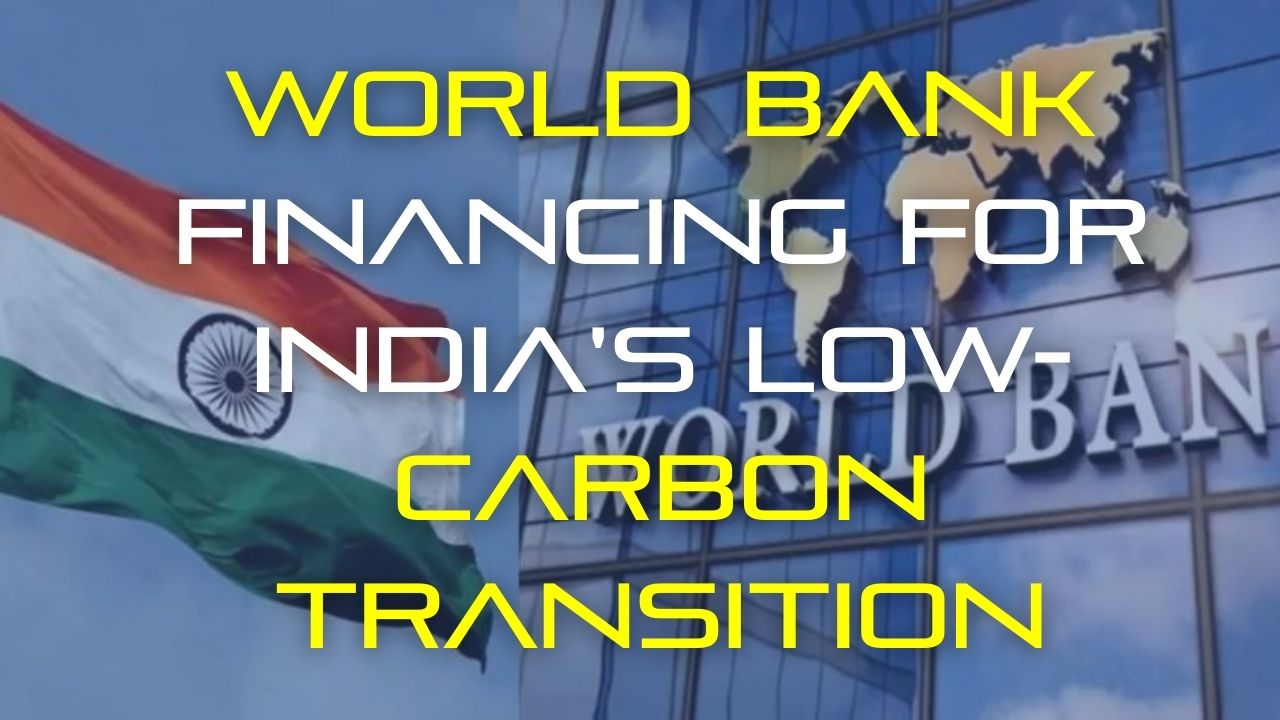Font size:
Print
World Bank Financing for India’s Low-Carbon Transition
Context: The World Bank has approved an additional $1.5 billion funding for a second initiative to aid India’s transition to a low-carbon economy.
More on News:
- The World Bank’s Board of Executive Directors approved $1.5 billion in financing to support India’s low-carbon energy development.
- Aimed at promoting the development of a market for green hydrogen, scaling up renewable energy, and stimulating finance for low-carbon energy investments.
- This project is a component of a larger plan to counteract climate change and encourage sustainable growth in economies expanding quickly.
The concept ‘Low Carbon Transition’ refers to a shift from an economy which depends heavily on fossil fuels to a sustainable, low carbon economy.
Second Low-Carbon Energy Programmatic Development Policy Operation:
- It will boost green hydrogen and electrolyzer production.
- Encourages renewable energy penetration by incentivizing battery energy storage solutions and amending the Indian Electricity Grid Code.Further develop a national carbon credit market.
- Expected Outcomes
-
-
- Production of at least 450,000 metric tons of green hydrogen and 1,500 MW of electrolyzers per year from FY 25/26
- Significant increase in renewable energy (RE) capacity
-
- Emissions reductions of 50 million tons per year.
- This aligns with India’s ambitious goals of 500 GW of renewable energy by 2030 and net zero by 2070.
- Further, supported by the ₹17,000-crore National Green Hydrogen Mission for electrolyser and green hydrogen production.
First Low-Carbon Energy Programmatic Development Policy Operation (June 2023):
- Supported waiver of transmission charges for renewable energy in green hydrogen projects.
- Provided a clear path for launching 50 GW of renewable energy tenders annually.
- Created a legal framework for a national carbon credit market.

Alignment and Financing
- The operation is aligned with India’s energy security strategy and the World Bank’s Hydrogen for Development (H4D) Partnership.
- Financing includes:
- $1.46 billion International Bank for Reconstruction and Development (IBRD) loan.
- $31.5 million International Development Association (IDA) credit.
Decoupling Growth from Emissions
-
- India’s approach to addressing climate change is pragmatic and resolute, balancing growth, energy security, and climate objectives.
- The “Make in India” initiative supports domestic manufacturing in RE.
- Though it raises the costs in the short-to-medium term, potentially delaying large-scale adoption.
- India strategically leverages public spending to attract private investment, aiming to optimise resources and reduce RE costs.
- Decoupling economic growth from emissions will require:
- Scaling up RE, especially in hard-to-abate industrial sectors.
- Expanding green hydrogen production and consumption.
- Faster development of climate finance to boost low-carbon investments

Initiative taken by India to develop low-carbon economy:
- National Green Hydrogen Mission
- Long-Term Low-Carbon Development Strategy (LT-LEDS), 2022
- National Solar Mission (NSM)
- PM-KUSUM (Pradhan Mantri Kisan Urja Suraksha evam Utthaan Mahabhiyan)
- Faster Adoption & Manufacturing of Hybrid and Electric Vehicles (FAME I and II)
- Leadership in Energy and Environmental Design (LEED) certification
- Green Rating for Integrated Habitat Assessment (GRIHA)





